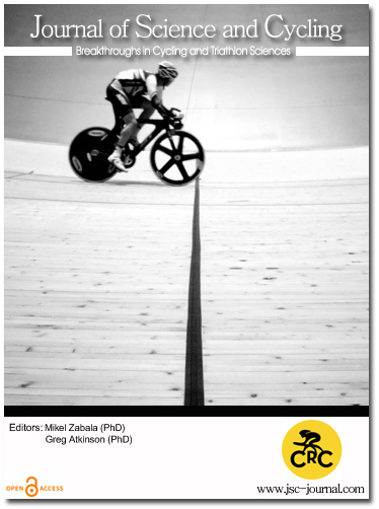Thrifty Reservoir: A Phenomenological Concept Model for Cycling
Keywords:
Energy, Energy Control, Energy Balance, Gain of Control, Cycling, Road Training, Fatigue, Time-Power Relationship, Stylised FactsAbstract
Thrifty Reservoir (TR) is a phenomenological model of field behavior of a rider, both in training and racing. The main component of TR is an energy reservoir; a stream of energy enters the reservoir, and an output stream propels the bike at the will of the rider. A control is exerted on the reservoir level. It is a PID (Proportional, Integral, Derivative) control, as it is usual in process engineering. Generally speaking, the control effect is to reduce the power available to the rider as much as the reservoir content is depleted. This property is a sort of thrift and therefore the model is named thrifty reservoir. This feature of TR, as far as the author knows, is a real novelty in cycling modelling as it imports concepts from process engineering into the cycling field. The model is mathematically described by a couple of equations: a differential equation for the dynamics of the reservoir and an algebraic equation for the control. TR is easily applied to training session with intermittent exercise or race conditions where intensity of effort is very variable in time as in a race or in a road training session. In this capacity TR differs from models based on explicit formulas, which work only on average values and have difficulties with intermittency. TR differs also from W'bal models which have no control mechanisms on reservoir content, and therefore have difficulties in identifying maximal effort points, while with TR they are easily identified. TR predictive capacity may be applied day by day to road training sessions and races without any need to run specific tests to determine its parameters. TR development may lead to a valuable tool available to trainers in their work, for instance in monitoring training progress, in designing more effective training sessions, and race strategy as well.
Downloads
Published
How to Cite
Issue
Section
Copyright (c) 2024 Journal of Science and Cycling

This work is licensed under a Creative Commons Attribution-NonCommercial-NoDerivatives 4.0 International License.
Authors contributing to Journal of Science and Cycling agree to publish their articles under a Creative Commons CC BY-NC-ND license, allowing third parties to copy and redistribute the material in any medium or format, and to remix, transform, and build upon the material, for any purpose, even commercially, under the condition that appropriate credit is given, that a link to the license is provided, and that you indicate if changes were made. You may do so in any reasonable manner, but not in any way that suggests the licensor endorses you or your use.
Authors retain copyright of their work, with first publication rights granted to Cycling Research Center.






